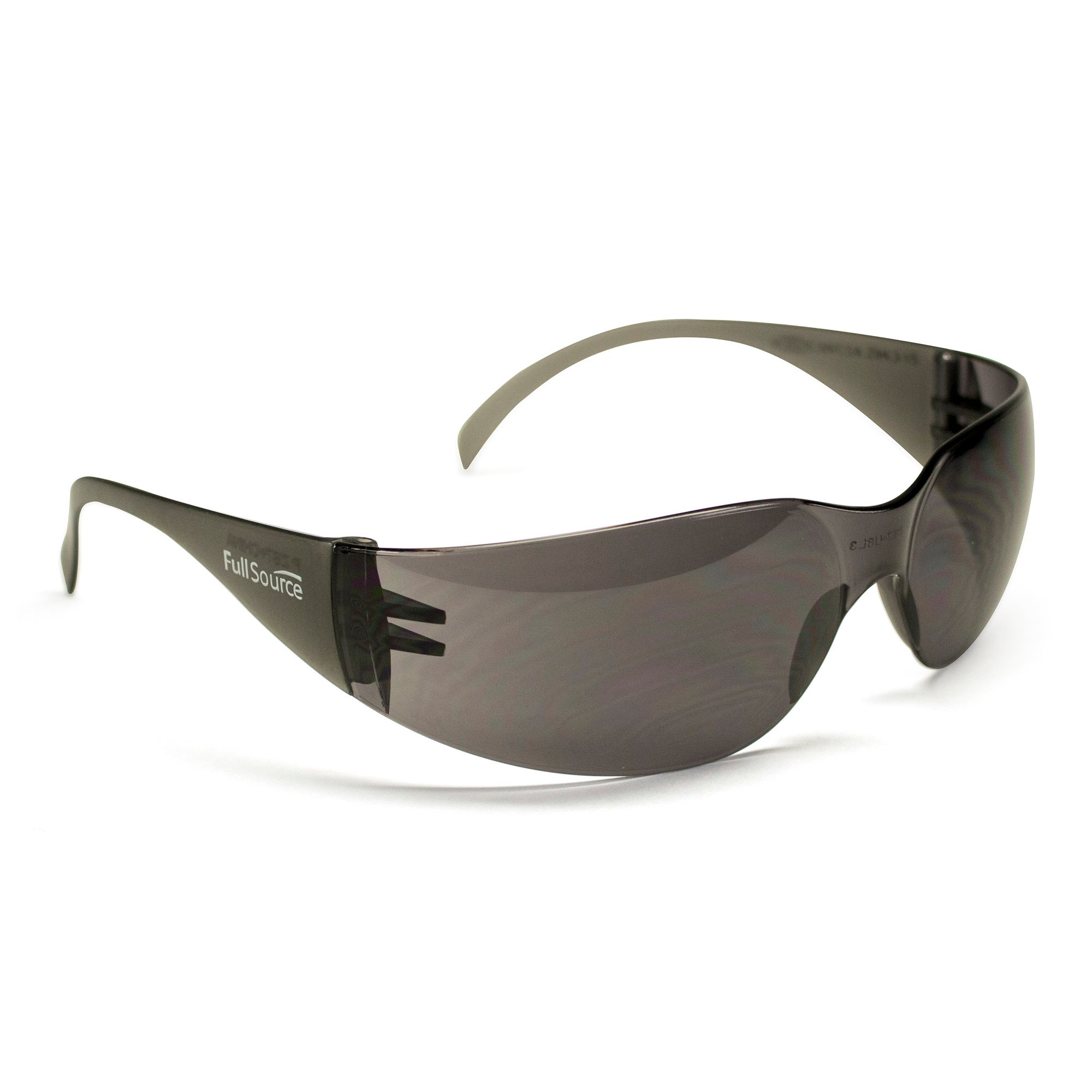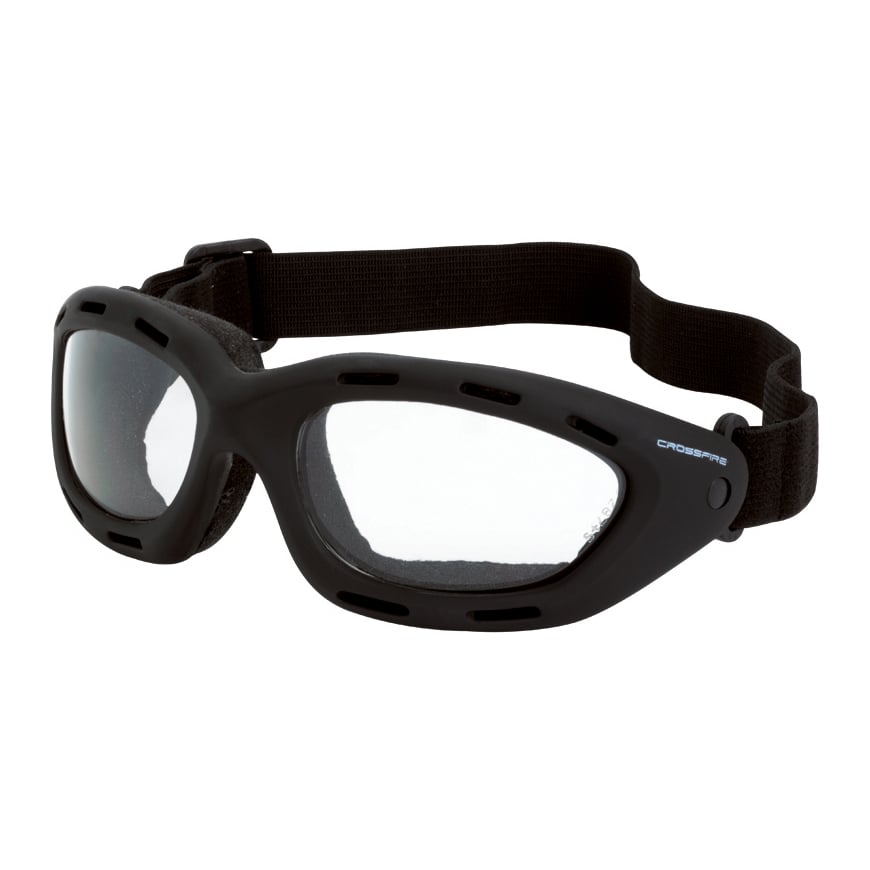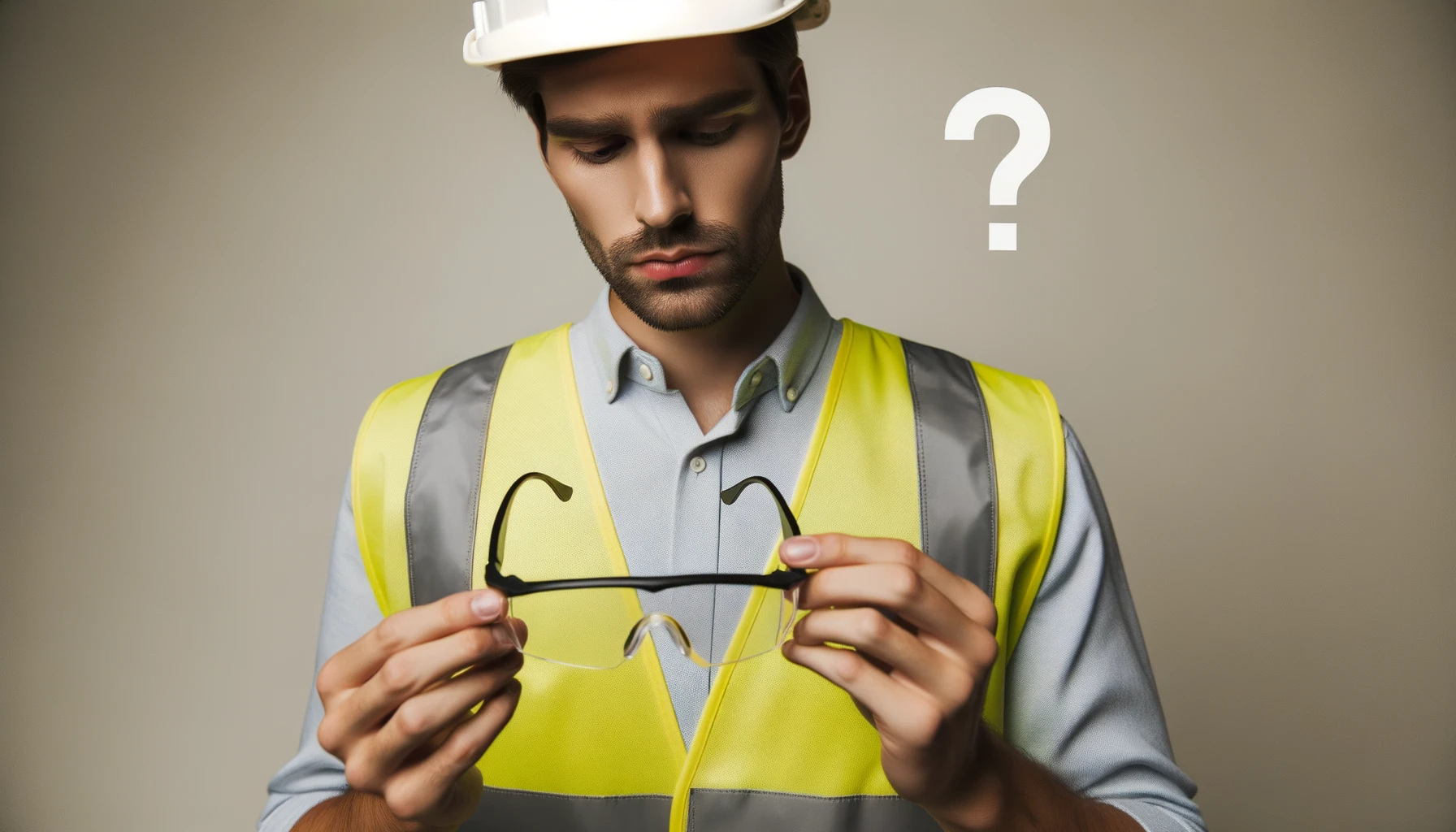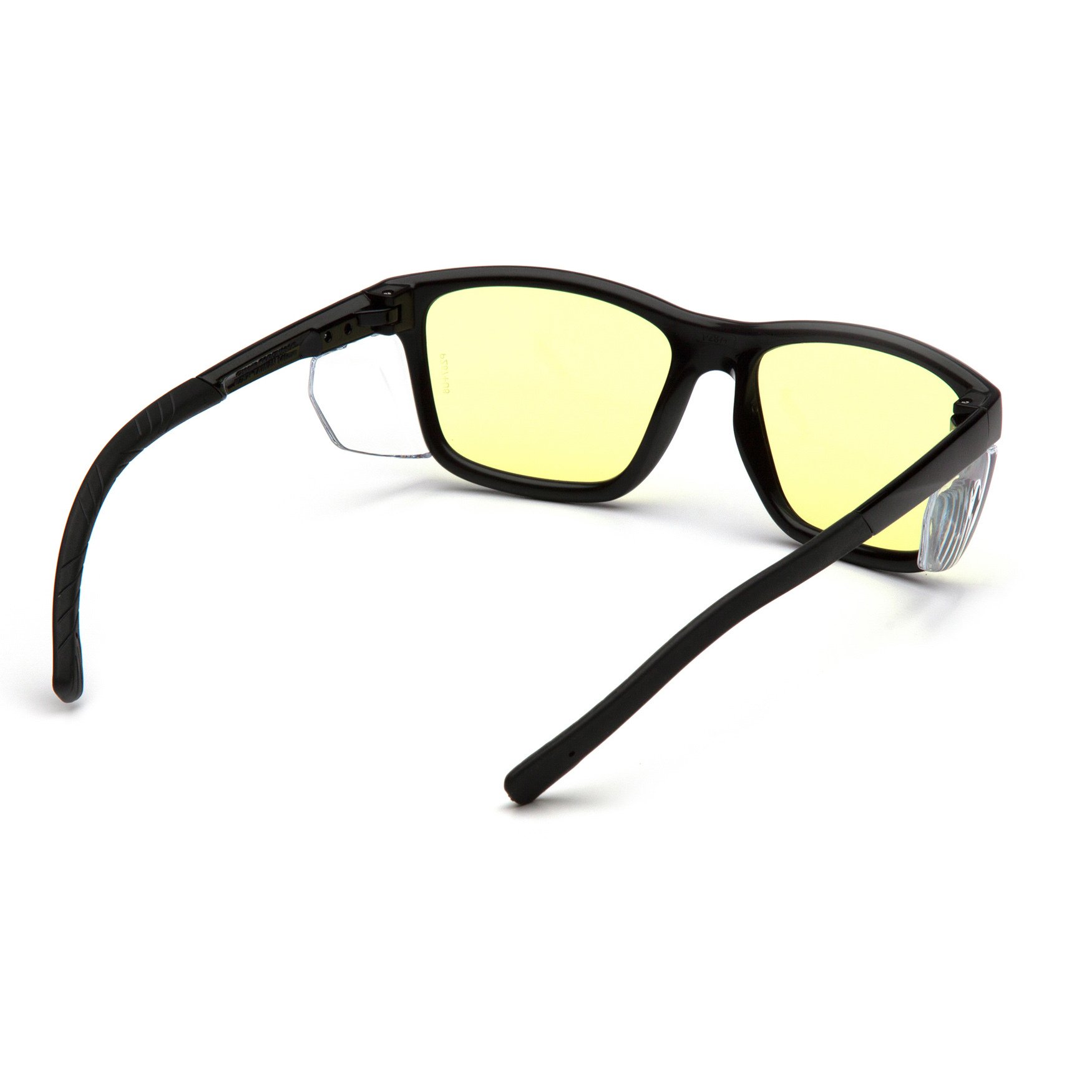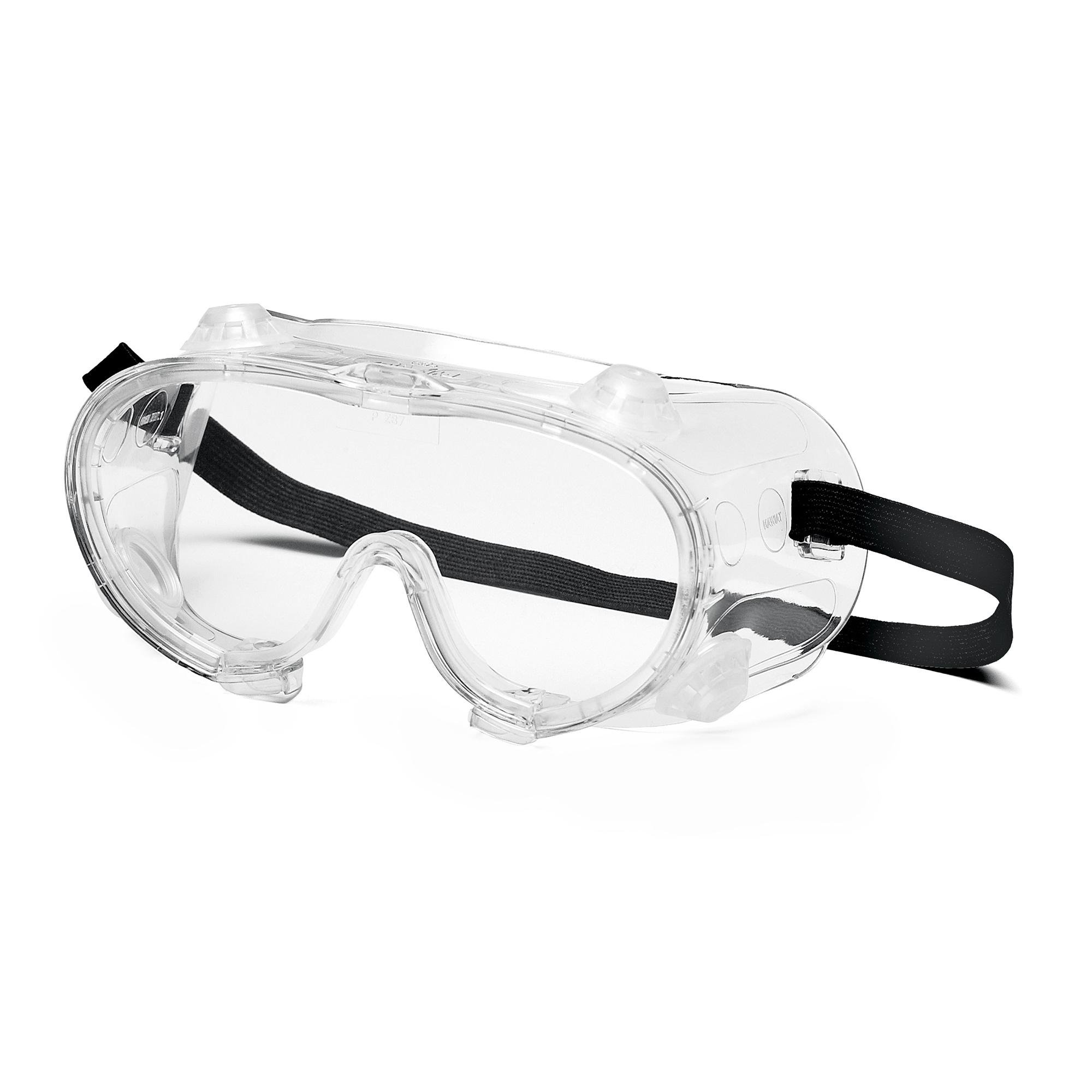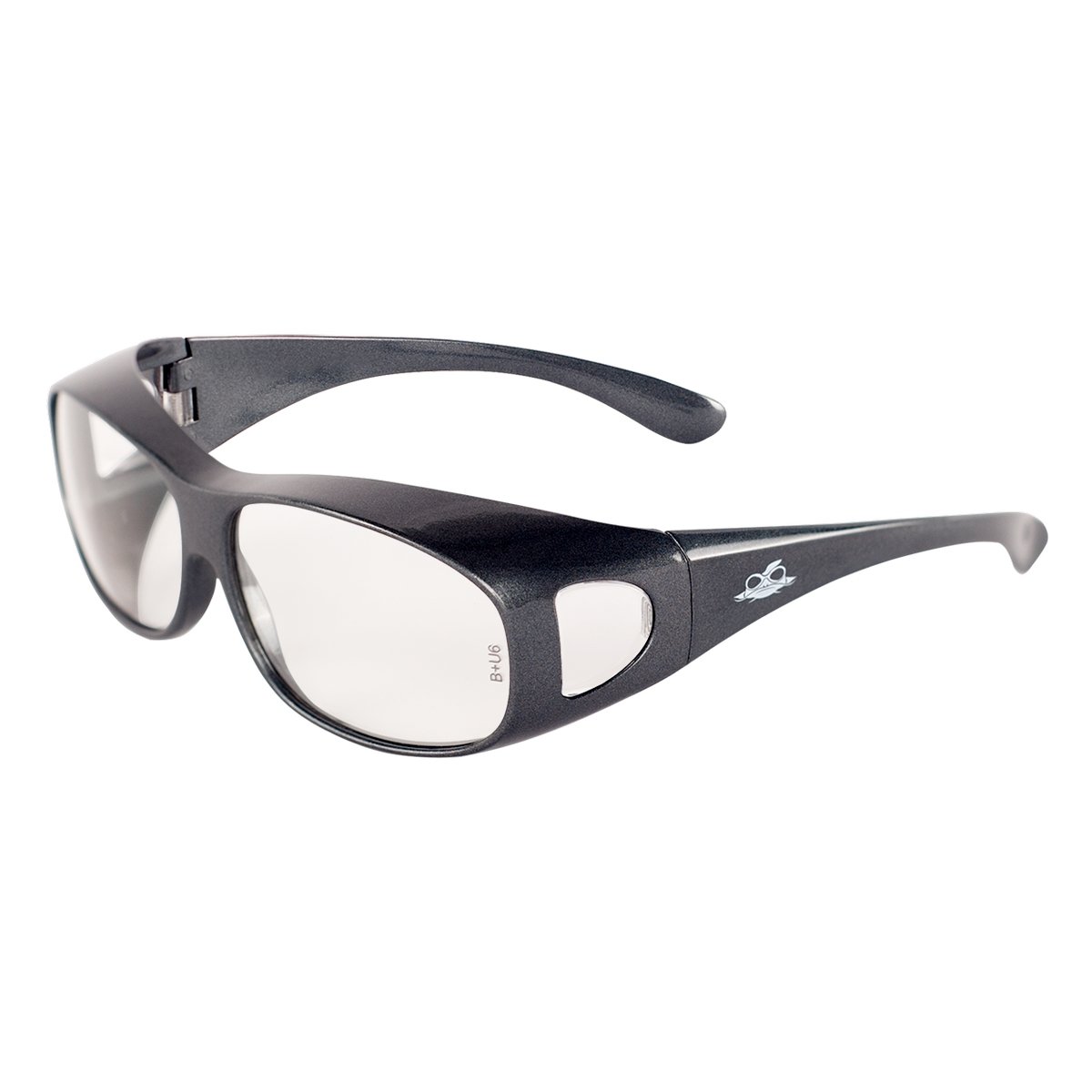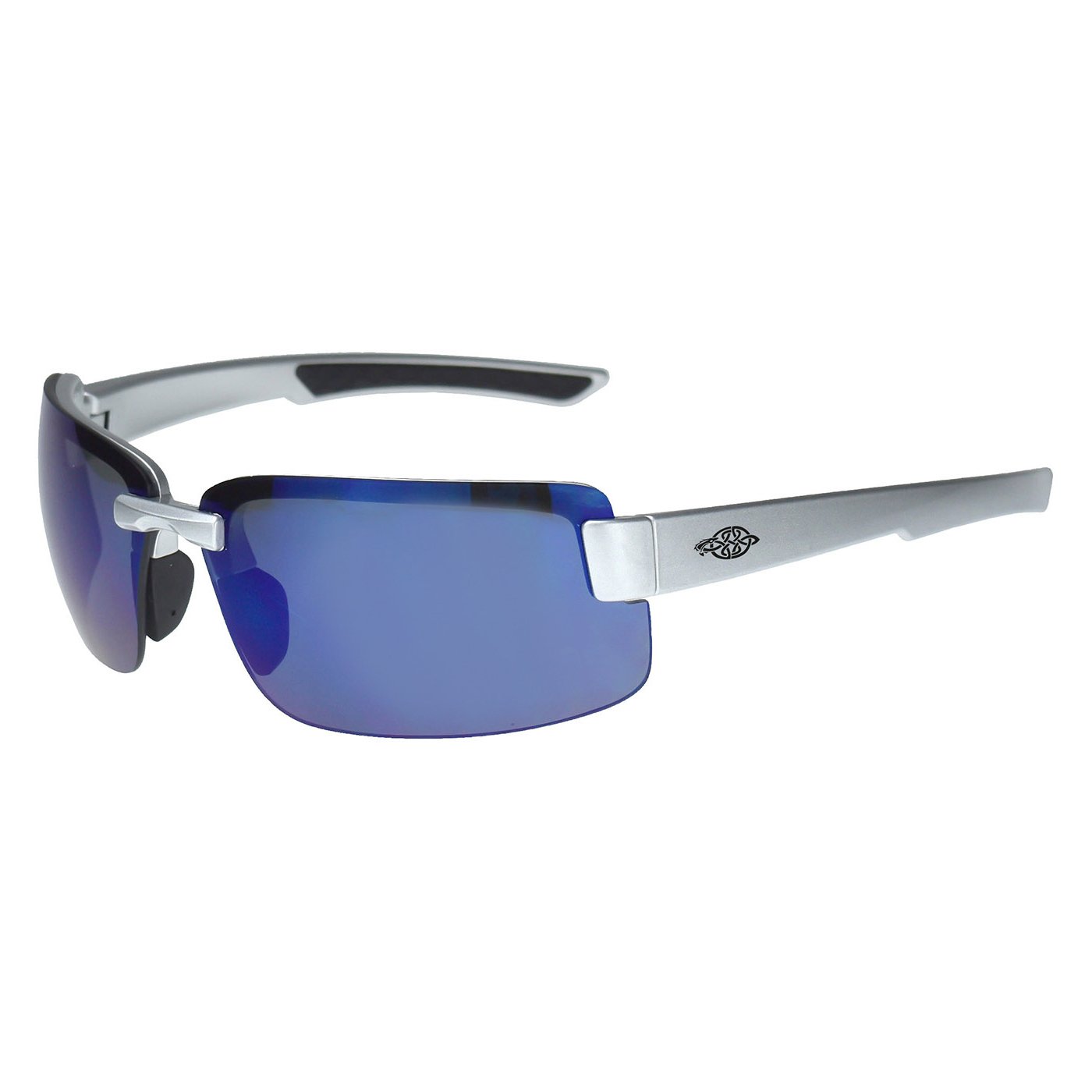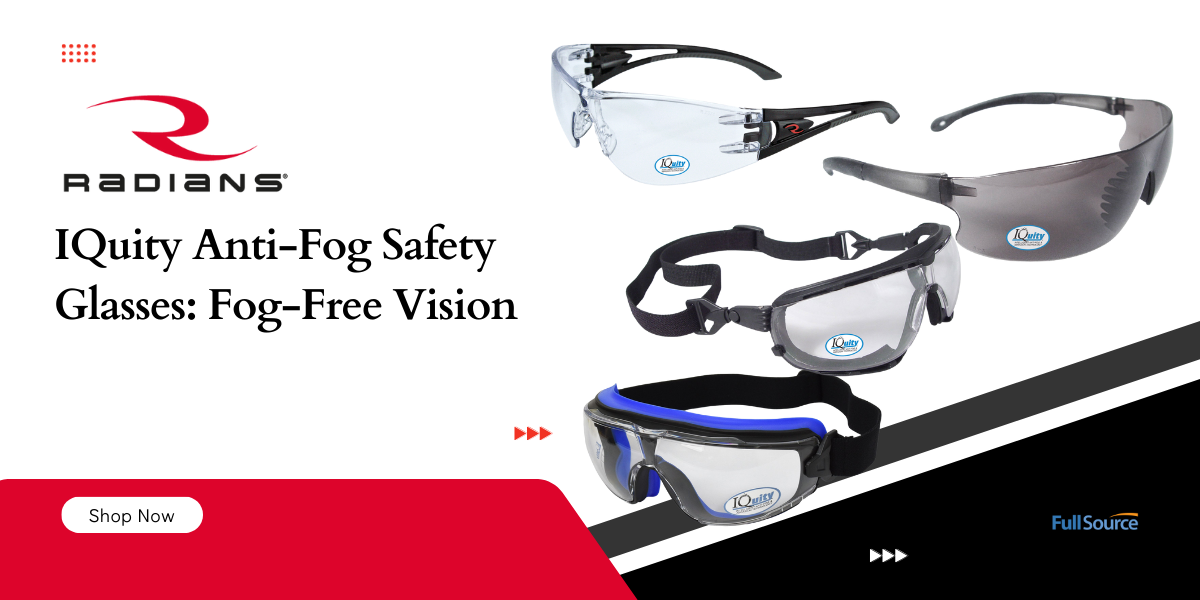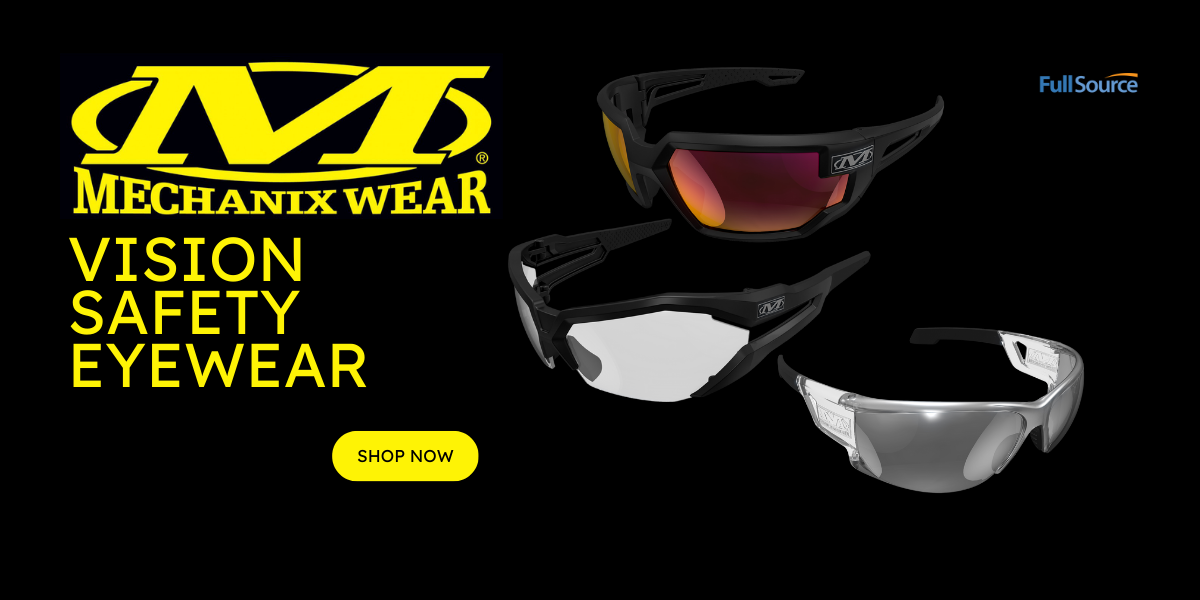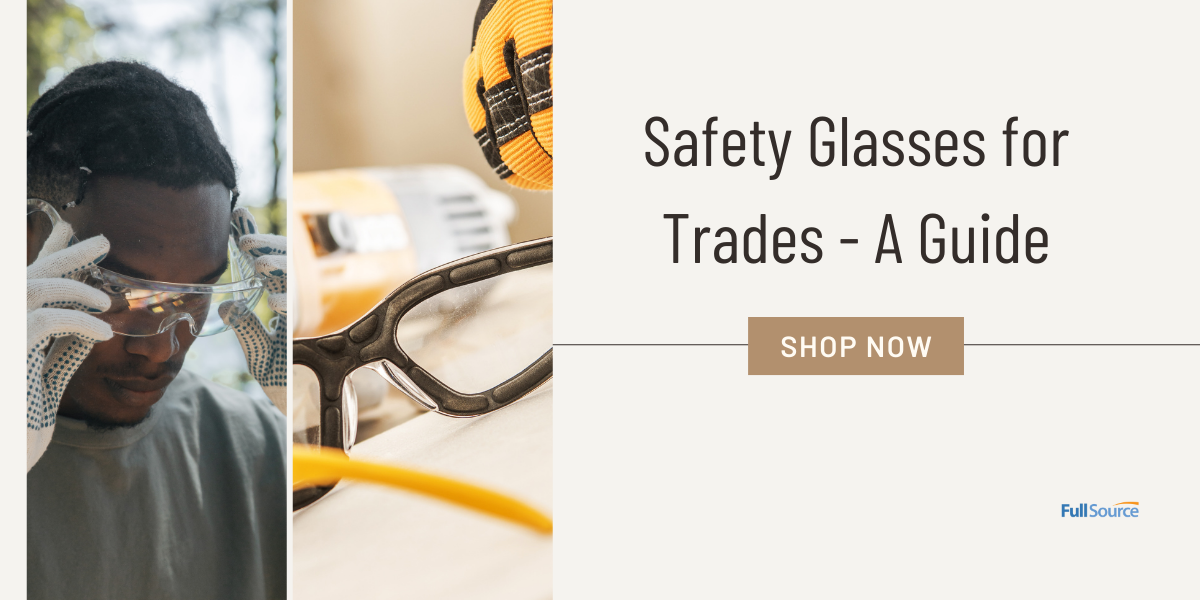Protecting your vision is crucial, whether you’re working on a construction site, in a laboratory, or simply enjoying outdoor activities. But have you ever wondered about those tiny markings on your safety eyewear? Well, get ready to unveil the mystery! In this blog post, we dive deep into understanding ANSI Z87 Safety Standards and how these markings play a significant role in keeping your eyes safe from potential hazards.
Introduction to ANSI Z87 Safety Standards
First of all, the American National Standards Institute (ANSI) is a non-profit organization that oversees the development and implementation of safety standards across various industries. ANSI Z87 is the specific standard that applies to eye and face protection, including safety glasses, goggles, and face shields.
The purpose of ANSI Z87 is to ensure that these products provide adequate protection for workers against potential hazards in the workplace. This standard sets requirements for impact resistance, optical clarity, and coverage area, among other factors.
Impact Resistance: One of the most critical aspects of ANSI Z87 is its impact resistance requirement. Safety eyewear must be able to withstand high-velocity impacts from flying objects without breaking or shattering. The standard specifies different levels of impact resistance based on the type of eyewear – basic, high-impact, and high-velocity impact. Basic level eyewear can protect against small particles at low speeds, while high-impact eyewear can withstand larger objects at higher speeds.
Optical Clarity: In addition to protecting against physical impacts, ANSI Z87 also ensures that safety eyewear maintains proper optical clarity. This means that there should be minimal distortion or haze when wearing the glasses or goggles. The standard also requires that lenses have a minimum thickness to prevent them from shattering upon impact.
More Factors
Coverage Area: Another significant aspect of ANSI Z87 is its coverage area requirement. Eyewear must cover a sufficient area around the eyes and face to protect against potential hazards. For example, safety glasses must have side shields or wrap-around lenses to prevent objects from entering through the sides.
Testing and Certification: Safety eyewear must pass tests from an accredited laboratory to comply with ANSI Z87. The testing process involves subjecting the eyewear to various impact tests and verifying that it meets all other requirements set by the standard. Also, once a product is certified, it can display the ANSI Z87 mark on its packaging or frame.
Employer Responsibilities: Employers are responsible for ensuring that their employees have access to appropriate eye and face protection in compliance with ANSI Z87. This includes providing training on how to properly use and maintain safety eyewear. As well as regularly inspecting and replacing damaged or outdated equipment. And economy safety glasses from brands like MCR Safety provide affordable protection that won’t break the bank.
Why are these Standards Important?
ANSI Z87 safety standards are a set of guidelines and regulations put in place by the American National Standards Institute (ANSI) to ensure the safety and quality of various products, including eyewear. These standards play a crucial role in protecting consumers from potential hazards and ensuring that products meet minimum safety requirements.
1. Safety of Consumers
Most of all, one of the main reasons why ANSI Z87 safety standards are important is to protect the safety of consumers. Eyewear can pose significant risks if not made with proper materials and construction techniques. The ANSI Z87 standard specifically addresses eye protection by setting criteria for impact resistance, penetration resistance, and durability of eyewear. This means that any eyewear marked with ANSI Z87 has undergone rigorous testing to ensure it can withstand high-velocity impacts, extreme temperatures, chemical exposure, and other hazards.
2. Occupational Safety
Another critical reason why these standards are essential is to safeguard employees who work in hazardous environments. Such as construction sites or industrial facilities where eye injuries are common. In such workplaces, employers must provide their workers with proper protective equipment that meets or exceeds the ANSI Z87 standard requirements. This ensures workers take adequate measures to protect their eyes from potential hazards they face on the job.
3. Compliance with Regulations
The Occupational Safety and Health Administration (OSHA) requires employers to comply with specific safety regulations to prevent workplace accidents and injuries. For eye protection, OSHA mandates that employers provide their workers with appropriate eyewear that meets ANSI Z87 standards for high-impact or hazardous work environments. Failure to comply with these regulations can result in fines and penalties for employers.
ANSI Z87 Standardizations
4. Quality Assurance
Also, ANSI Z87 safety standards play a vital role in ensuring the quality of eyewear products. The standards outline strict requirements for materials, design, and manufacturing processes. Manufacturers must use high-quality, durable materials for eyewear and ensure it meets specific performance criteria. This helps to ensure that consumers are getting a reliable and effective product that will adequately protect their eyes.
5. International Standards
Products with the ANSI Z87 label gain recognition not only in the United States but also internationally. Many countries worldwide have adopted the ANSI Z87 standard as the benchmark for eye protection. Therefore, complying with these standards allows manufacturers to sell their products globally, providing consumers with consistent protection regardless of where they are located.
Understanding the Different Markings on Eyewear
Individuals exposed to potential eye hazards in the workplace or during recreational activities need eyewear as essential protective gear. However, not all eyewear is created equal. Understanding the different markings on your eyewear can help you select the right one that meets the safety standards set by ANSI (American National Standards Institute). In this section, we will discuss the various markings found on eyewear and what they mean.
1. ANSI Z87 or Z87+: These are safety standards set by ANSI for protective eyewear. The “Z” stands for “z87,” which was the first standard released by ANSI in 1968. The “+”, added later in 2003, signifies that the eyewear has passed high-velocity impact tests, making it suitable for use in industrial settings with high-risk potential for eye injuries.
2. High Impact Rating: This marking indicates that the eyewear has been tested and certified to withstand a higher level of impact than regular safety glasses. It is denoted as “+H” after the Z87 or Z87+ marking.
3. Side Shields: Eyewear with side shields offers additional protection from debris and particles entering from the sides of your face. This marking indicates that your glasses have been tested with side shields attached. And add Pyramex SS100 side shields to your prescription glasses for lightweight and comfortable protection.
More Markings
4. UV Protection: Many people overlook this aspect when selecting protective eyewear, but it is crucial to protect your eyes from harmful UV rays. Look for a “U6” marking on your glasses, which means they block at least 99.9% of UV radiation.
5. Prescription Lenses: If you need prescription lenses, look for the marking “Z87-2” on your eyewear. This indicates that the glasses meet all ANSI requirements and can accommodate prescription lenses.
6. Anti-Fog: Eyewear with an anti-fog coating is essential, especially if you work in a high-humidity environment or participate in activities that cause you to sweat. Look for a “U” marking on your glasses, which signifies that they have been treated with an anti-fog coating. And our best-selling anti-fog safety glasses are the Bouton 250-12 Lady Eva, MCR Safety BK110AF, and Pyramex SB9310ST.
7. Impact Rating: The impact rating indicates the level of protection your eyewear provides against potential hazards. It ranges from “D” (droplet and splash protection) to “A” (high-velocity impact protection). The higher the rating, the more protection your eyewear offers.
Z87: Basic Impact
The American National Standards Institute (ANSI) has developed a set of safety standards for eyewear, known as the Z87 series. These standards ensure that eyewear provides adequate protection against various hazards in different work environments.
One of the most commonly seen markings on safety eyewear is the “Z87” designation. This indicates that the eyewear meets the basic impact requirements set by ANSI in their Z87.1 standard. But what exactly does this mean?
Basic impact refers to protection against low-velocity impacts that may occur during everyday activities in a workplace. This can include things like small objects falling or flying debris from tools or machinery. The Z87 standard requires that safety eyewear must be able to withstand an impact of a 1-inch steel ball dropped from a height of 50 inches without any penetration, cracking, or breaking.
Impact Resistance Standards
To achieve this level of protection, all materials used in the construction of Z87-rated eyewear must meet specific impact resistance criteria set by ANSI. This includes both lenses and frames. Manufacturers must make lenses from polycarbonate, Trivex, or other materials with similar properties like high strength and shatter resistance. Frames must also be able to withstand an impact without breaking or deforming.
In addition to meeting basic impact requirements, Z87-rated eyewear must also provide adequate coverage and fit securely on the face. This ensures that no gaps exist between the face and the edges of the glasses where objects could potentially enter.
It’s important to note that the Z87 designation does not indicate protection against all hazards. Other ANSI ratings, such as Z87+ and Z87.1+, offer higher levels of impact protection and may be required for certain work environments.
In summary, seeing the “Z87” marking on safety eyewear means that the glasses have met the basic impact requirements set by ANSI and should provide adequate protection against everyday workplace hazards. However, it’s always important to assess the specific hazards in your workplace and choose appropriate eyewear with the necessary ratings for full protection.
Z87+: High Impact
When it comes to safety eyewear, one of the most important things to understand is the ANSI Z87+ standard for high-impact protection. This standard is set by the American National Standards Institute (ANSI). And ensures that eyewear meets certain requirements to protect against high-impact hazards.
First and foremost, it’s important to note that not all safety eyewear is created equal. While all safety glasses must meet basic requirements for impact resistance, those marked with Z87+ go above and beyond in terms of protecting against high impact hazards.
To be considered Z87+ compliant, eyewear must pass a series of rigorous tests. These tests include dropping a steel ball from a height of 50 inches onto the lens and frame. As well as subjecting them to high-velocity impacts from small objects like gravel or metal fragments.
The Z87+ marking on safety eyewear also indicates that they have been tested for optical clarity and provide 100% UV protection. This means that these glasses not only protect your eyes from physical impact but also ensure clear vision and shield them from harmful UV rays.
Furthermore, Z87+ compliant glasses feature durable materials such as polycarbonate lenses which are able to withstand higher levels of force without shattering. This is crucial in industries where workers may be exposed to flying debris or projectiles.
D3: Liquid Splash Protection
Eyewear with D3 liquid splash protection meets the requirements of ANSI Z87.1 safety standards for protection against liquid splashes. This level of protection is required in work environments where there is a high risk of exposure to hazardous liquids, such as chemicals, acids, or hot liquids. Select from options with D3 protection like the MCR Safety HB3110AF Hydroblast goggles. These offer D3 protection with UF anti-fog lenses and a soft TPR seal.
Liquid splash protection is achieved through various design features and materials used in eyewear. These include:
1. Sealed frames: Eyewear with D3 marking has sealed frames that prevent liquids from entering the eyes from the sides or top of the glasses. This is important when working with hazardous chemicals or other substances that may accidentally splash onto the face. And our safety goggles in anti-fog, clear, tinted, and welding lens options provide sealed protection from hazards.
2. Tight-fitting temples: Also, the temples (or arms) of eyewear marked with D3 are designed to fit snugly against the head. This provides additional protection against liquid splashes from above.
3. Wraparound design: Many D3 glasses have a wraparound design that covers a larger area around the eyes. Offering increased protection against splashes from all angles.
A Higher Level of Protection
4. Impact-resistant lenses: In addition to protecting against liquid splashes, D3 eyewear must also meet ANSI Z87.1 standards for impact resistance. This means they can withstand high-velocity impacts without shattering and potentially causing eye injuries.
5. Anti-fog coating: Some D3 glasses come with an anti-fog coating on their lenses. Which helps to prevent fogging and maintain clear vision even in humid or hot environments. And for some of the highest levels of anti-fog protection, select from options with Superior anti-fog lenses. The best-selling styles are the Pyramex S4110ST Intruder, MCR Safety DM13HPF, and Bolle 40306 Tryon.
It is important to note that while D3 eyewear offers a high level of protection against liquid splashes, it is still possible for some liquids to seep in through small gaps or openings around the edges. Therefore, it is crucial to choose the appropriate eyewear for the specific hazards and risks present in your work environment.
D4: Dust Protection
In addition to providing impact resistance and protection against UV rays, the ANSI Z87 safety standards also have requirements for dust protection. This is particularly important for workers in industries such as construction, mining, and manufacturing where dust particles can be present in the air.
According to ANSI Z87.1-2020 standard, eyewear must meet certain criteria to be considered D4 (dust protection) compliant. These requirements include:
1. Protection against fine particles: Eyewear marked with “D4” must provide adequate protection against small airborne particles that may cause irritation or injury to the eyes. The standard specifies that at least 99% of particles measuring 5 microns or larger must be blocked by the eyewear.
2. Sealed eye coverage: The eyewear should fit securely on the face and have a seal around the eyes to prevent dust from entering through gaps in the frame or lenses. This can be achieved through features such as foam padding or wraparound designs.
See Clear & Stay Comfortable
3. Fog resistance: In addition to blocking dust particles, D4 compliant eyewear must also have anti-fog properties to ensure clear vision in dusty environments. This can be achieved through anti-fog coatings on lenses or ventilation systems that allow airflow without compromising eye protection.
4. Comfortable fit: To ensure workers are able to wear their protective eyewear comfortably for extended periods of time, D4 compliant eyewear must have adjustable temples and nose pieces for a customizable fit.
When it comes to choosing safety eyewear for dusty environments, it is important to look for the “D4” marking on the product. This indicates that the eyewear has been tested and meets all the necessary requirements for dust protection according to ANSI Z87.1 standards.
D5: Fine Dust Particles Protection
In addition to protecting against high-velocity impacts, ANSI Z87.1 safety standards also cover protection against fine dust particles. This is particularly important for workers in industries such as construction, mining, and manufacturing where exposure to fine dust particles is common.
The D5 marking on your eyewear indicates that it is tested and certified to provide protection against fine dust particles. It means that the eyewear must meet stringent criteria set by ANSI for filtering out particles that are smaller than 2 micrometers in size.
What exactly are fine dust particles?
Fine dust particles, also known as respirable particulates or PM2.5 (particulate matter 2.5 micrometers or smaller), refer to tiny solid or liquid particles suspended in the air. These particles can come from a variety of sources including construction materials, soil, industrial processes, and combustion of fossil fuels.
Why is protection against these particles necessary?
Fine dust particles are so small that they can easily enter our respiratory system when we breathe. Once inside our bodies, they can cause a range of health issues including respiratory problems, heart disease, and even cancer.
To avoid these potential hazards, wearing eyewear with D5 marking is crucial for those working in environments where there is a high risk of exposure to fine dust particles.
How to Determine Which Marking is Right for You?
When it comes to selecting the right protective eyewear, understanding ANSI Z safety standards and their corresponding markings is crucial. These markings provide important information about the level of protection that a particular pair of eyewear offers, ensuring that you are choosing the appropriate eyewear for your needs.
So how do you determine which marking is right for you? Here are some key factors to consider:
1. Identify your specific workplace hazards: The first step in determining which marking is right for you is to identify the specific hazards present in your workplace. This can include physical dangers such as impact or projectiles, chemical exposure, radiation exposure, or a combination of these hazards. By knowing what potential risks you face on the job, you can choose eyewear with appropriate markings to protect against those hazards.
2. Understand ANSI Z87 standards: ANSI (American National Standards Institute) establishes voluntary safety standards for various industries, including protective eyewear. In addition, these standards help ensure that products meet minimum requirements for safety and performance. Familiarizing yourself with ANSI Z87 and Z87+ standards will make it easier to understand the different markings on protective eyewear.
More ANSI Z87 Markings to Consider
3. Look for “Z87” or “Z87+”: All protective eyewear certified by ANSI must have either a “Z87” or “Z87+” marking on them. This indicates that they meet at least basic safety requirements as set by the ANSI standard.
4. Check for additional markings: Beyond the basic “Z87” or “Z87+” marking, there may be additional markings on eyewear that indicate the level of protection they provide. For example, “Z87+” indicates that the eyewear has been tested and approved for high-velocity impacts, while “Z87-2” indicates that the eyewear has been tested and approved for splash or droplet impacts.
5. Consider your specific needs: In addition to the ANSI Z87 markings, you should also consider any additional features or specifications that may be important to you. This could include things like anti-fog coatings, UV protection, or prescription lens options. Make sure to choose eyewear that meets all of your specific needs and requirements.
Other Factors to Consider
When it comes to selecting protective eyewear, there are many factors to consider beyond just the ANSI Z87 safety standards. These additional factors can help ensure that you choose the best eyewear for your specific needs and environment. Also, in this section, we will discuss some other important considerations to keep in mind when choosing protective eyewear.
1. Type of Hazard:
Therefore, the type of hazard you face crucially determines the most suitable protective eyewear for you. Different occupations and activities may require different levels of protection. For example, if you work in a chemical laboratory, you will need eyewear with splash protection, while working in construction may require impact-resistant lenses.
2. Lens Material:
The material used for the lens plays an essential role in determining its effectiveness. Polycarbonate lenses are the most commonly used material as they are lightweight, impact-resistant, and offer excellent optical clarity. You should avoid other materials like glass or plastic because they can shatter and cause additional injuries.
3. Fit and Comfort:
Protective eyewear must fit properly to provide adequate protection. Ill-fitting glasses can leave gaps between the face and frame, allowing debris or chemicals to enter from the sides or top. It is crucial to try on different styles and sizes to find one that fits comfortably on your face without any gaps.
More Factors to Consider
4. Anti-Fog Coating:
Furthermore, if you work in environments with high humidity or temperature changes, consider choosing protective eyewear with an anti-fog coating. This coating prevents the lenses from fogging up, ensuring clear vision and reducing the need to constantly wipe them.
5. UV Protection:
Also, UV protection is important for both indoor and outdoor environments as exposure to ultraviolet radiation can cause eye damage over time. Look for eyewear that offers 99-100% UVA and UVB protection.
6. Durability:
The durability of protective eyewear is crucial, especially if you are using it in a rugged or hazardous environment. The frames should be able to withstand impact and resist chemicals, while the lenses should remain scratch-free even after prolonged use.
Conclusion
In conclusion, the ANSI Z87 safety standards are an essential aspect to consider when purchasing protective eyewear. Knowing what the markings on your eyewear mean can help ensure that you have the appropriate level of protection for your specific needs. Safety should always be a top priority, and adhering to these standards can greatly reduce the risk of eye injuries in hazardous work environments. So next time you’re shopping for protective eyewear, make sure to look out for these ANSI Z87 markings and choose a pair that will keep your eyes safe.


